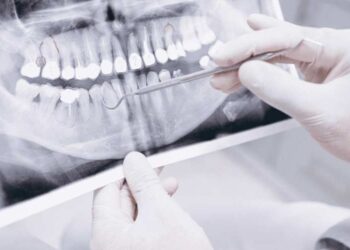Unfortunately, ‘the elderly’ are one of the demographic categories that are more likely to catch harmful viruses than any of the other segments. It is crucial that carers and helpers, who are in constant contact with these people, are wearing the correct clothing so that the spread of viruses is kept to a minimum. Whilst restrictions nationwide continue to ease, PPE (Personal Protective Equipment) has quite literally been a lifesaver for many people over the past 2 years.
With the imminent introduction of facemasks and improvements in hygiene habits, people have slowly but surely limited the spread of COVID19. However, facemasks are only one of the many types of PPE that are enforced to protect vulnerable people. As such, this article is going to discuss the different types of PPE that are utilised in care homes which can be detailed below:
Disposable Gloves – Nitrile
Nitrile gloves are the most popular variant of disposable protective gloves that are incorporated in care home settings. This is because they are manufactured using synthetic rubber material which ensures that users are at no risk of experiencing latex allergies when the gloves are put on. In addition, nitrile gloves offer fantastic strength and resistance against liquids such as oils and chemicals and bodily fluids when compared to other glove types in its category.
Finally, if there is a risk of gloves tearing, or the task requires a high level of dexterity or requires an extended period of time to wear, then nitrile gloves are the ideal option that careers and helpers should consider.
Single-Use Disposable Apron
Disposable aprons are another type of PPE that carers should always be worn when in contact with the older generation. This is because aprons protect from the risk of infection and reduce opportunities for cross-transmission of microorganisms to occur. This can be done if blood or body fluids splash onto their clothes, which is common in care home settings. It is also vital that these items are used once and once only before being disposed of. Again, this is to reduce the chance that contamination occurring which can be transferred to the user’s clothes.
Face Masks – Type IIR Fluid Resistant Masks
Face masks, and in particular, the type IIR disposable surgical mask variant should be worn at all times when providing direct care and support within 2 metres. The type IIR surgical mask is designed to help the wearer prevent the spread of respiratory droplets produced by coughing or sneezing, making it absolutely ideal in care home settings. It also features a splash-resistant layer of fabric that protects the wearer from splashes of blood and bodily fluids where this may be common around older people.
When to Throw The Mask Away
Face masks should be discarded and replaced if they have experienced any of the following circumstances:
- Damage to the physical item whether that be cut rips or detaching of the strings that sit behind your eye ears
- Causing skin irritation or is uncomfortable to wear
- Contact with bodily fluids anywhere on the mask
- If the mask is damp in any way
- Providing difficulties to breathe through. This is where a full face shield is then recommended
Eye Protection – Face Shield
Eye protection, which mainly comes in the form of face shields, are usually used where there is a risk of droplets or secretions from the client’s mouth, nose, lungs or from body fluids that may reach the user’s eyes. This usually occurs when a patient is coughing or sneezing etc.
It can be used continuously while providing care unless it needs to be removed from the face. For example, the shield may need to be removed to take a break from duties or if the user is struggling to breathe.
Considerations Regarding Face Shields
Eye protection should be properly cleaned/sanitised after each use to prevent the likelihood of cross-contamination. Furthermore, face shields should be swapped and/or disposed of if the following circumstances have occurred:
- The face shield is damaged slightly. Even if there is a slight crack in the visor of the shield, this can still create the possibility that bodily fluids or harmful substances can leak and come into contact with your skin.
- If soiled with secretions or bodily fluids
- Face shield is uncomfortable or causes skin irritation – swap the shield and find a face shield that fits comfortably around your face to reduce irritation.
Final Points
Hand Hygiene
While we have listed the types of PPE that care workers and helpers are required to wear when in direct contact with clients within 2 metres, it is vital that frequent hand hygiene is maintained. Once workers have carried out their duties, it is crucial that they sanitise their hands and the area in which they were dealing with the patient. This practice greatly reduces the likelihood of harmful viruses like COVID19 becoming a problem and can help the care home be as safe as possible for the vulnerable people within the vicinity.
PPE Removal Order
Finally, is advised that PPE is removed in a certain order to minimise the potential for self-contamination which can be listed below:
- Gloves
- Hand hygiene
- Apron
- Eye protection
- Hand hygiene
- Surgical face mask
- Hand hygiene









